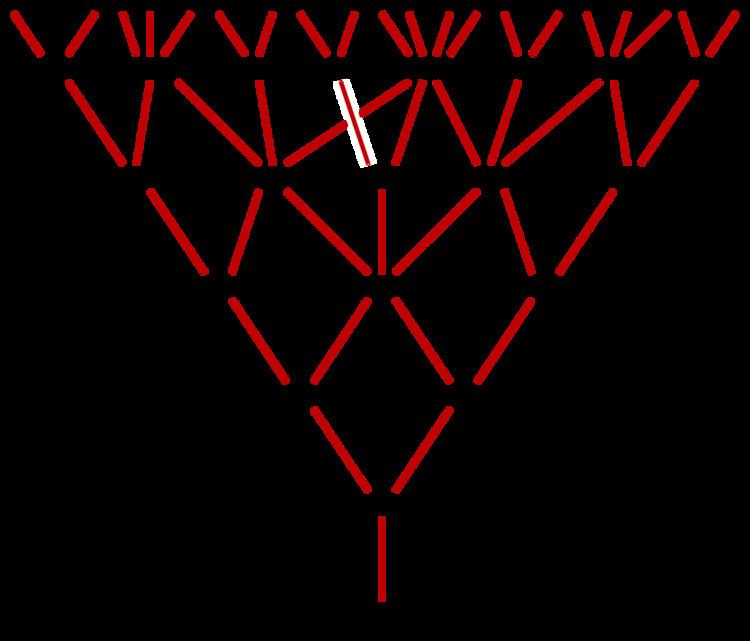 | ||
In mathematics, a differential poset is a partially ordered set (or poset for short) satisfying certain local properties. (The formal definition is given below.) This family of posets was introduced by Stanley (1988) as a generalization of Young's lattice (the poset of integer partitions ordered by inclusion), many of whose combinatorial properties are shared by all differential posets. In addition to Young's lattice, the other most significant example of a differential poset is the Young–Fibonacci lattice.
Contents
Definitions
A poset P is said to be a differential poset, and in particular to be r-differential (where r is a positive integer), if it satisfies the following conditions:
These basic properties may be restated in various ways. For example, Stanley shows that the number of elements covering two distinct elements x and y of a differential poset is always either 0 or 1, so the second defining property could be altered accordingly.
The defining properties may also be restated in the following linear algebraic setting: taking the elements of the poset P to be formal basis vectors of an (infinite dimensional) vector space, let D and U be the operators defined so that D x is equal to the sum of the elements covered by x, and U x is equal to the sum of the elements covering x. (The operators D and U are called the down and up operator, for obvious reasons.) Then the second and third conditions may be replaced by the statement that DU – UD = rI (where I is the identity).
This latter reformulation makes a differential poset into a combinatorial realization of a Weyl algebra, and in particular explains the name differential: the operators "d/dx" and "multiplication by x" on the vector space of polynomials obey the same commutation relation as U and D/r.
Examples
The canonical examples of differential posets are Young's lattice, the poset of integer partitions ordered by inclusion, and the Young–Fibonacci lattice. Stanley's initial paper established that Young's lattice is the only 1-differential distributive lattice, while Byrnes (2012) showed that these are the only 1-differential lattices.
There is a canonical construction (called "reflection") of a differential poset given a finite poset that obeys all of the defining axioms below its top rank. (The Young–Fibonacci lattice is the poset that arises by applying this construction beginning with a single point.) This can be used to show that there are infinitely many differential posets. Stanley (1988) includes a remark that "[David] Wagner described a very general method for constructing differential posets which make it unlikely that [they can be classified]." This is made precise in Lewis (2007), where it is shown that there are uncountably many 1-differential posets. On the other hand, explicit examples of differential posets are rare; Lewis (2007) gives a convoluted description of a differential poset other than the Young and Young–Fibonacci lattices.
The Young-Fibonacci lattice has a natural r-differential analogue for every positive integer r. These posets are lattices, and can be constructed by a variation of the reflection construction. In addition, the product of an r-differential and s-differential poset is always an (r + s)-differential poset. This construction also preserves the lattice property. It is not known for any r > 1 whether there are any r-differential lattices other than those that arise by taking products of the Young–Fibonacci lattices and Young's lattice.
History, significance, and open questions
In addition to the question of whether there are other differential lattices, there are several open problems relating to the rank growth of differential posets. It was conjectured in Stanley (1988) that if P is a differential poset with rn vertices at rank n, then
where p(n) is the number of integer partitions of n and Fn is the nth Fibonacci number. In other words, the conjecture states that at every rank, every differential poset has a number of vertices lying between the numbers for Young's lattice and the Young-Fibonacci lattice. The upper bound was proved in Byrnes (2012). The lower bound remains open. Stanley & Zanello (2012) proved an asymptotic version of the lower bound, showing that
for every differential poset and some constant a. By comparison, the partition function has asymptotics
Properties
Every differential poset P shares a large number of combinatorial properties. A few of these include:
Generalizations
Lam (2008) defined a signed analogue of differential posets.
